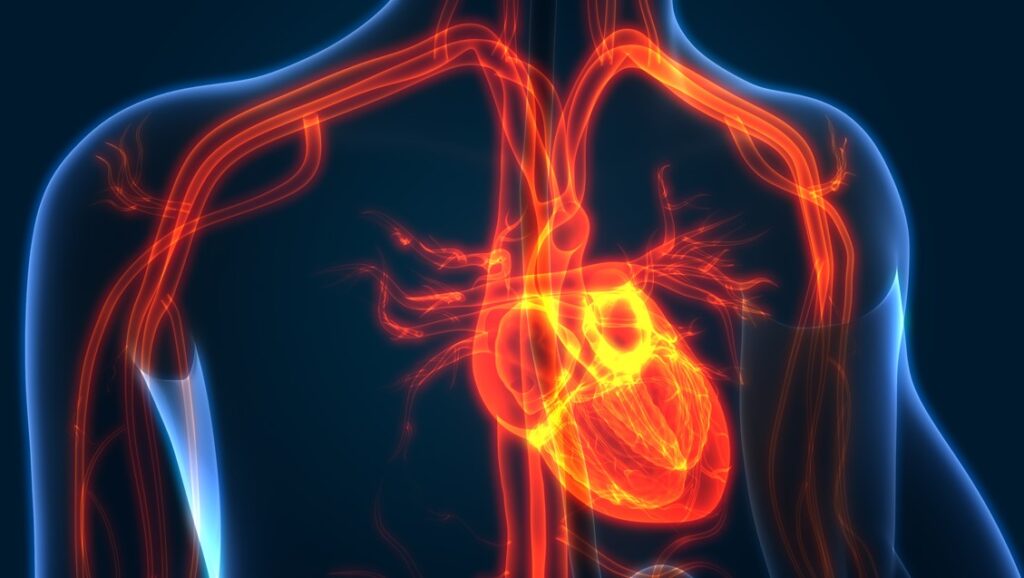Along with bioresonance and ozone treatment, infusion therapy is a key component of natural therapy — a holistic approach to healthcare that takes account of mind, body, and spirit. During infusion therapy, intravenous (IV) drips are used to transfuse a combination of vitamins, antioxidants, and nutrients directly into the veins via a needle. This enters into the bloodstream, where it provides nourishment for the entire body, such as replenishing levels of antioxidants, vitamins, and amino acids.
Here we will explore the finer details of the bloodstream and its functions. By unpacking the science of the circulatory system, we can examine how the venous pathways are able to transport vital substances throughout the body, and gain a clearer understanding of how intravenous treatments work.
What is the circulatory system?
The function of the heart is to deliver oxygen to our body’s cells, and in doing so, allow us to breathe. After we inhale air into our lungs, the heart then needs to pump blood back into them so the body can take another breath. This happens in a cycle called either the cardiovascular or circulatory system. In simple terms, blood is pumped from the heart throughout the body to deliver oxygen, and then returns back to the heart. The blood is then sent to the lungs to acquire more oxygen. The cycle repeats ad infinitum, for as long as we are breathing. As such, the cardiovascular and the respiratory system work together.
The circulatory system is therefore composed of the body’s network of blood vessels, transporting blood to vital organs. There are two types of these vessels: the arteries, which are directed away from the heart, and the veins that carry blood back to it. The system has been compared to a tree, since the trunk-like aorta (main artery) branches off into the large arteries, leading to increasingly smaller blood vessels. These conclude in a matrix of microscopic vessels, or capillaries.
The purpose of the circulatory system is not just to circulate blood, however. The system delivers nutrients and oxygen to all cells in the body too, along with hormones. It also serves to eliminate waste products like carbon dioxide created through breathing, chemical byproducts from your organs and waste from food and drink consumption.
The cardiac cycle
There are two interconnected cardiovascular systems in the human body. The systemic circulation supplies organs, tissues and cells with blood, and therefore nutrients like nutrients and hormones. Pulmonary circulation, however, is when our bloodstream receives fresh oxygen through breathing.
The process of blood circulation begins when the heart relaxes between two heartbeats — also known as the cardiac cycle. The blood flows from the two upper chambers of the heart (atria) into the lower two chambers, or ventricles. These are then able to expand, pumping blood into the larger arteries, in a process termed the “ejection period”.

Systemic circulation
With systemic circulation, the left ventricle delivers blood into the aorta, which then travels through the arterial network until it reaches the capillaries. At this point, the blood delivers oxygen, nutrients and hormones. After this, the deoxygenated blood is absorbed by the veins and carried back to the heart to restart the cycle.
Pulmonary circulation
Now the pulmonary circulation of the lungs begins. The right-hand ventricle pumps the low-oxygen blood into the pulmonary artery, and then into smaller arteries and finally, capillaries. These form a delicate network around the small air sacs located at the end of the lung’s airways (pulmonary vesicles). This is where CO2 is released from the blood into the air sacs — fresh oxygen is then allowed to enter the bloodstream. Therefore, when we exhale CO2, our blood meanwhile is carrying oxygen through the pulmonary system back into the heart, allowing us to take in more fresh air.
How do IVs work with the circulatory system?
The veins are closest to the skin, making them the optimal route for intravenous therapy. The venous pathways (the ones that carry blood back to the heart) is home to 75% of the body’s blood content. As a result, the intravenous tract is therefore the fastest way to deliver medications and fluid replacement throughout the body. It involves direct introduction of substances into the circulatory system, allowing drugs, blood or fluids to bypass the digestive process.
Unfortunately, digestion has a compromised absorption ability, which can lead to multiple nutritional deficiencies. As a result, the oral ingestion of remedies has reduced bioavailability in comparison to intravenous therapy, which has little to no delay in absorption. Supplements taken orally can also irritate parts of the digestive tract, for example, acid reflux disease or stomach upsets.
What are the potential benefits of IVs?
IV treatment can provide a nervous system reset through an injection of amino acids, which potentially rebalances an over-activated sympathetic nervous system — the trigger for human’s fight or flight mode. IV solutions help address endocrine imbalances, which is what happens when the hormones that regulate metabolism, sleep cycle, and blood pressure (among others) are disrupted. This has been linked to adrenal burn-out, among other problems.
IV therapy is also able to increase the body’s immunity through cocktails of vitamin C, zinc and selenium. On
top of this, it can be used to perform live cell therapy for regenerative prevention of fatigue and memory loss. For more information on what solution is right for your body, get in touch to speak with one of our naturotherapists.

